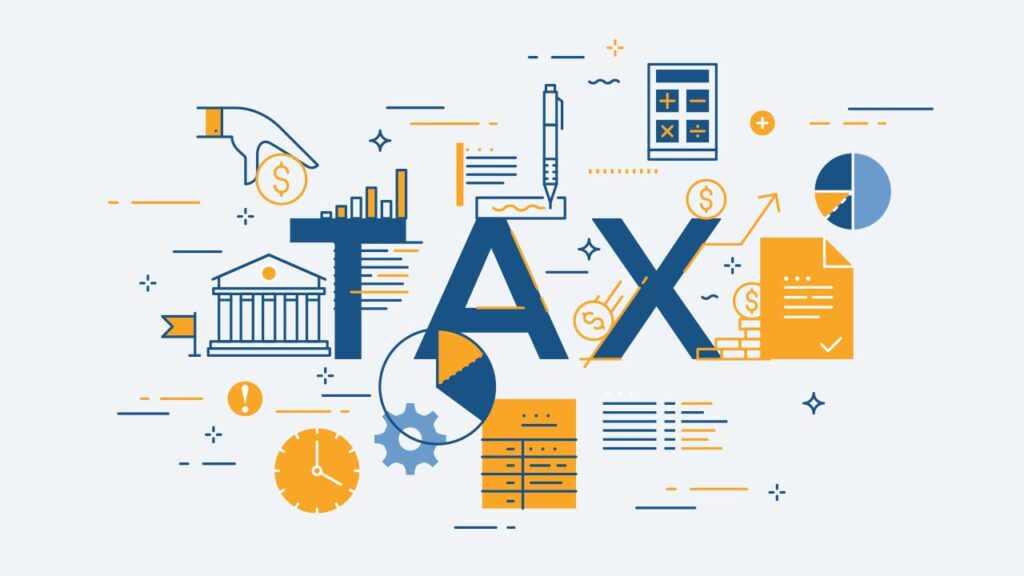
The journey into investing can appear formidable, particularly for those just embarking on their financial expeditions. It often feels like navigating a complex labyrinth filled with jargon, endless choices, and the daunting prospect of risking hard-earned capital. This initial apprehension, while understandable, frequently leads individuals to succumb to widespread misconceptions that can significantly impede their progress toward achieving vital financial goals, from purchasing a home to securing a comfortable retirement.
Indeed, building wealth and maintaining the purchasing power of your savings are paramount objectives that investing helps facilitate. If savings are left in traditional bank accounts with minimal interest, inflation will inevitably erode their value over time. Yet, a proactive approach to investing, guided by informed decisions rather than popular fallacies, is crucial for outperforming inflation and fostering substantial long-term growth.
This article delves into some of the most pervasive investment myths that financial advisors earnestly wish individuals would abandon, especially when planning for retirement. By demystifying these common beliefs, we aim to equip you with actionable insights and a clearer understanding of how to approach your investment strategy with greater confidence and intelligence, transforming potential pitfalls into stepping stones towards financial success.

1. **Myth: You need a lot of money to start investing.**A prevalent misconception that often prevents aspiring investors from taking their first step is the belief that a substantial sum of capital is required to begin. This idea, deeply ingrained in popular culture, can create an insurmountable psychological barrier, leading many to postpone investing indefinitely while they attempt to save a mythical “large enough” amount. The reality, however, is far more encouraging and accessible than this myth suggests.
The good news is that you absolutely do not need vast sums to start investing today. Most online brokers have eliminated account minimums, making it possible to open an investment account with very little initial capital. This accessibility is further enhanced by the advent of fractional share investing, which allows beginners to purchase small portions of high-priced stocks or Exchange-Traded Funds (ETFs) for just a few dollars, rather than the full share price. This innovative approach democratizes investing, bringing diversified portfolios within reach for almost everyone.
Furthermore, the landscape of investment tools includes micro-investing platforms designed specifically for those with small dollar amounts. These platforms can even round up everyday purchases made through a debit card, channeling the spare change into investments. This “set it and forget it” method cultivates a consistent investing habit, demonstrating that even modest, regular contributions can accumulate significantly over time, harnessing the power of compounding.
Therefore, the barrier to entry has never been lower. Whether through a few dollars invested in diversified ETFs or the automatic roundup of daily transactions, the opportunity to begin building wealth is available to virtually anyone, regardless of their current financial standing. The key is to start, even if small, and maintain consistency.

2. **Myth: There’s a perfect time to start investing.**Many new investors find themselves paralyzed by the search for the “perfect” market entry point, believing there’s an optimal moment to invest that guarantees maximum returns. This pursuit of ideal timing, often fueled by economic headlines and market volatility, can lead to procrastination and missed opportunities. However, financial experts consistently advise against this approach, emphasizing that attempting to time the market is a futile and often counterproductive endeavor.
You will inevitably encounter many different market environments throughout your investing life, from booming bull markets to challenging bear markets. Getting too caught up in whether right now is the perfect time to get started often proves to be a significant impediment. The unpredictability of market movements means that waiting for what seems like the absolute best moment usually results in missing out on growth that could have occurred during the waiting period.
As James Royal, Ph.D., Bankrate Investing and Wealth Management Principal Writer, underscores, “There is one piece of advice that remains steady even when the market isn’t, and that’s to avoid timing the market or trying to buy the best investment at the right time. It often backfires.” This expert perspective highlights the inherent risk and unreliability of short-term market predictions. The focus should instead be on your long-term financial goals and establishing a disciplined investment schedule.
Rather than seeking a mythical “perfect” entry, a more prudent strategy involves consistent investment over time. This approach, known as dollar-cost averaging, entails investing a fixed amount at regular intervals, regardless of market highs or lows. It mitigates the risk of investing a large sum at an unfortunate peak and ensures continuous participation in market growth. The “perfect time” to invest, therefore, is almost always now, by simply starting and staying consistent.

3. **Myth: Investing is too complicated for beginners.**The sheer volume of information, coupled with specialized terminology and a seemingly endless array of investment products, frequently leads beginners to conclude that investing is an inherently complex activity best left to financial professionals. This perception of overwhelming difficulty can deter many from taking charge of their financial future, fostering a belief that they lack the necessary expertise or intelligence to succeed in the investment world. While some aspects can be intricate, the core principles and accessible tools available for beginners simplify the process immensely.
While choosing investments can indeed feel overwhelming initially, the good news is that there are many simple choices that can make it easier, particularly for those just starting out. The financial industry has evolved to offer solutions specifically designed to streamline the investment process and reduce complexity. These include all-in-one funds and robo-advisors, which provide professionally managed, diversified portfolios without requiring extensive market knowledge from the investor.
Robo-advisors, for instance, utilize algorithms to automatically select and manage a diversified portfolio of exchange-traded funds (ETFs) based on an individual’s financial needs and risk tolerance. This low-cost, hands-off approach makes professional money management accessible, as the day-to-day money management is handled by computers rather than live humans. Similarly, target-date mutual funds offer another straightforward option, managing portfolios based on a specific retirement date and automatically adjusting asset allocation as that date approaches, shifting from riskier assets like stocks to more conservative bonds.
Therefore, the belief that investing is too complicated for beginners is largely a myth. With the availability of user-friendly platforms, automated investment services, and diversified funds, individuals can embark on their investment journey with confidence. The focus should be on understanding fundamental goals and choosing accessible tools, rather than mastering every nuance of the market from day one. Investing can be simple, effective, and empowering for everyone.

4. **Myth: You don’t need clear financial goals before investing.**A common pitfall for new investors is diving into the market without a clear understanding of what they are investing for. The allure of potential returns can sometimes overshadow the fundamental purpose of saving and investing, leading to haphazard decisions and a lack of direction. This myth suggests that simply putting money into investments is sufficient, regardless of the underlying objectives, ultimately diminishing the effectiveness and strategic intent of one’s financial efforts.
However, as financial experts advise, “Don’t start by asking, ‘What should I invest in?’ Instead, start by asking, ‘What am I investing for?'” This crucial distinction highlights that successful investing fundamentally begins with identifying your financial aspirations. Establishing both short-term and long-term goals is paramount, as these objectives will dictate the most appropriate investment strategies, account types, and risk levels suitable for your individual circumstances. Without clear goals, an investment portfolio lacks purpose and direction.
For many people, investing for retirement is a primary objective, and indeed, “investing something toward retirement should be pretty high up on your financial to-do list.” But goals can also include saving for a down payment on a house, funding a child’s education, or building an emergency fund. Each of these goals has a different time horizon and risk profile, which in turn influences the optimal investment choices. For instance, money needed immediately should be in safe, accessible investments, whereas long-term funds can be allocated to higher-returning but more volatile assets.
Ultimately, the statement that “successful investing generally starts with what you’re investing for, not what you’re investing in” serves as a foundational principle. Your financial goals act as a roadmap, guiding every investment decision and ensuring that your capital is working effectively toward desired outcomes. Taking the time to define these goals provides clarity, discipline, and a much higher probability of achieving financial success.
Read more about: Mastering Your Money: 14 Essential Skills for Unshakeable Financial Stability by Age 35

5. **Myth: You should always try to time the market.**The temptation to predict market movements—buying low and selling high to maximize profits—is a powerful allure for many investors, particularly beginners. This desire to “time the market” is a persistent myth, driven by the belief that clever foresight or access to exclusive information can consistently yield superior returns. However, this strategy is fraught with peril and has been repeatedly shown to be ineffective for the vast majority of investors.
As a core piece of financial wisdom, “There is one piece of advice that remains steady even when the market isn’t, and that’s to avoid timing the market or trying to buy the best investment at the right time. It often backfires.” The reality is that market fluctuations are influenced by a myriad of complex factors, making accurate and consistent prediction virtually impossible. Even seasoned professionals struggle to consistently time the market, and attempting to do so often leads to emotional decision-making, such as panic selling during downturns or buying at market peaks.
Instead of trying to outsmart the market, a far more effective strategy is to focus on long-term investing. A stock is a partial ownership stake in a real business, and over time, your fortune will rise with that of the underlying company you invested in. Remaining invested for at least five years allows you to ride out short-term volatility and benefit from the market’s historical tendency to grow over the long run. Constantly reacting to market blips or trying to jump in and out of positions typically erodes returns due to transaction costs and the high probability of being wrong.
To counter the urge to time the market, consider implementing dollar-cost averaging. This strategy involves investing your money in equal portions at regular intervals. Your investments occur regardless of the changes in price for the stock or other investment, potentially helping reduce the impact of volatility on the overall purchase. This disciplined approach removes emotion from the investment process, fostering consistent growth rather than relying on elusive market timing.
Read more about: Six-Pack Saboteurs: 15 Ab Exercises Most Guys Should Skip for Real Results

6. **Myth: Active investing always outperforms passive investing.**For many, the idea of active investing—where fund managers or individual investors actively buy and sell securities in an attempt to beat market benchmarks—holds a strong appeal. It suggests that with enough skill, research, and quick decision-making, one can consistently achieve returns superior to the broader market. This belief often leads beginners to seek out “expert” stock pickers or actively managed funds, assuming that higher effort equates to higher performance. However, this is another significant myth that warrants careful scrutiny.
The distinction between active and passive investing is fundamental. A passive investor typically owns an asset like diversified mutual funds or ETFs that charge low fees, aiming to mirror market performance. In contrast, an active investor might choose individual investments or mutual funds that aim to outperform the market through strategic trading and selection. While the promise of outperformance is attractive, the reality often diverges.
Crucially, “Studies have shown that passive investing tends to outperform active investing over time.” This data-backed insight challenges the conventional wisdom that active management is inherently superior. The reasons for this trend are multifaceted, including the consistent drag of higher management fees associated with active funds, which erode returns, and the sheer difficulty of consistently beating highly efficient markets. Over the long haul, these factors tend to give passive strategies, such as investing in low-cost index funds that track broad market benchmarks like the S&P 500, a significant advantage.
For beginners, this means that a sophisticated, yet accessible, path to investment success often lies in embracing passive strategies. Index funds and diversified ETFs usually come with very low fees, sometimes no fee at all, helping investors keep more of the funds’ returns for themselves. By focusing on broad market exposure and minimizing costs, individuals can build wealth over time without the complex and often disappointing pursuit of consistently beating the market.
Navigating the investment landscape successfully demands a clear understanding of its inherent complexities and avoiding common pitfalls. While the first section tackled initial barriers and fundamental strategies, our journey into demystifying investment continues, delving into further critical misconceptions that, left unaddressed, can derail even the most well-intentioned financial plans. Understanding these additional realities is paramount for building a robust, resilient portfolio tailored for long-term success, particularly as you approach or plan for retirement.

7. **Myth: All investments carry the same level of risk.**A prevalent and dangerous misconception among new investors is the belief that all investment vehicles are inherently similar in their risk profiles, or, conversely, that certain investments are entirely risk-free. This oversimplification often leads individuals to allocate capital without a thorough understanding of potential downsides, exposing them to unforeseen volatility or, conversely, opting for overly conservative options that fail to keep pace with inflation.
However, the reality is starkly different: “Certain investments carry more risk than others, and you don’t want to be surprised after you’ve made the investment.” A well-informed investor acknowledges that a diverse spectrum of assets exists, each with its own unique risk-return trade-off. From the relative safety of Certificates of Deposit (CDs) to the higher volatility of individual stocks, understanding these distinctions is foundational to making prudent choices.
Ignoring your personal risk tolerance can lead to detrimental outcomes. As the context highlights, “Volatile investments such as stocks can make some people very uncomfortable when they decline, which can cause you to sell at the worst possible time.” This emotional response, often triggered by a mismatch between an investor’s temperament and their portfolio’s risk level, can lock in losses and undermine long-term growth potential. Knowing your risk tolerance isn’t just a recommendation; it’s a critical component of successful investing.
Therefore, before committing any capital, it is imperative to objectively assess your comfort level with potential fluctuations and drawdowns. Consider, “how long you can do without the money you’ll be investing and whether you’re comfortable not accessing it for a few years or longer.” This self-assessment will guide you toward investments that align with your emotional capacity for risk and your financial time horizon, ensuring you remain committed to your strategy even during market turbulence.

8. **Myth: Once you’ve invested, your work is done and you can forget about it.**Many new investors view the act of investing as a one-time setup, a task to be completed and then promptly forgotten. The initial effort of choosing accounts and making allocations can be substantial, leading to the erroneous belief that, once funds are deployed, the portfolio will automatically manage itself and consistently deliver desired returns without any further attention. This hands-off approach, while appealing for its simplicity, overlooks the dynamic nature of financial markets and personal circumstances.
While automated solutions like robo-advisors simplify day-to-day management, the overarching strategy requires periodic review. The context advises, “You’ll want to periodically (at least annually) check in on your plan.” This doesn’t imply constant tinkering or active trading, but rather a strategic assessment to ensure your investments still align with your evolving financial goals, risk tolerance, and life changes. Financial landscapes shift, and so too should your strategic oversight.
It’s also crucial to distinguish between healthy monitoring and detrimental over-analysis. As research suggests, “In fact, there’s evidence that the more often you check your investments, the riskier they seem, because you notice more of these short-term blips.” Focusing too much on daily or weekly market movements can lead to anxiety and impulsive decisions. The key is to “Try to stay focused on the big picture, like your long-term investing goals and your total portfolio’s performance,” rather than getting caught in the noise of short-term volatility.
Moreover, the concept of continuous learning is vital. Becoming an investor is an ongoing journey of knowledge acquisition. As you gain experience and understanding, your ability to make informed decisions improves. While the initial setup is important, maintaining momentum by “continuing to build your knowledge base” ensures you stay abreast of market trends, new opportunities, and evolving financial wisdom, empowering you to adapt your strategy intelligently over time.

9. **Myth: Taxes are an insignificant factor in long-term investment returns.**For many beginning investors, the primary focus is squarely on gross returns, with little consideration given to the impact of taxes. The assumption often made is that taxes are a minor deduction that won’t significantly alter the overall profitability of their investments, leading them to overlook crucial tax-efficient strategies. This oversight, however, can substantially erode wealth over decades, particularly in retirement planning.
The reality is that taxes can be a significant drag on investment performance. As the context explicitly states, “If you own investments in an individual or joint account, you’ll likely need to pay taxes on the interest, dividends and capital gains you earn.” These recurring taxes, applied annually or upon the sale of profitable assets, can diminish the power of compounding, which is the cornerstone of long-term wealth accumulation.
Fortunately, there are highly effective strategies to mitigate or even eliminate these tax liabilities. The solution often lies in utilizing “tax-advantaged retirement accounts such as an IRA.” Similarly, employer-sponsored plans like a 401(k) offer considerable tax benefits. In a traditional 401(k), “contributions are made prior to being taxed and grow tax-free until retirement age,” while Roth 401(k)s and Roth IRAs allow “contributions to be made after taxes” with the significant advantage that “you won’t pay taxes on withdrawals during retirement.”
Therefore, understanding the tax implications of your investment choices is not merely an afterthought but a strategic imperative. The type of account you choose, whether a standard brokerage account, a traditional 401(k), a Roth IRA, or others, profoundly influences your net returns. By prioritizing tax efficiency, investors can retain more of their hard-earned gains, allowing their capital to compound more effectively and significantly boosting their wealth-building potential for retirement and beyond.

10. **Myth: Individual stock picking is the best or only path to significant wealth.**The narrative of striking it rich through individual stock picks, fueled by sensational stories and the pursuit of “hot, secret stock picks,” often entices new investors. This myth suggests that the most successful investors are those who can consistently identify undervalued companies or predict market-beating performers, making individual stock selection seem like the most direct route to substantial wealth. However, for most, this approach is fraught with considerable risk and complexity.
While “Buying stocks in individual companies is the riskiest investment option discussed here, it can also be one of the most rewarding,” the key caveat is “if you don’t feel you have the expertise or stomach to ride it out with individual stocks, consider taking the more diversified approach offered by mutual funds or ETFs instead.” The context clearly points out the inherent volatility and the expertise required to navigate individual stocks effectively, underscoring that it’s not a suitable strategy for everyone.
Indeed, prudent investing often emphasizes diversification over concentrated bets. “Most people should focus on getting a broad range of common-sense investment types rather than placing all their bets on a small number of ‘high-promise’ investments.” Mutual funds and Exchange-Traded Funds (ETFs) are prime examples of this diversified approach, as they “pool together money from many investors to purchase a collection of stocks, bonds, or other securities,” providing broad market exposure and reducing company-specific risk.
For beginners, and even many experienced investors, index funds and diversified ETFs, which track broad market indexes like the S&P 500, offer a sophisticated yet accessible path to growth. These options often come with “very low fees, sometimes no fee at all,” allowing investors to “keep more of the funds’ returns for themselves.” By embracing diversification, investors can participate in the market’s long-term growth without the daunting research, high risk, and potential emotional distress associated with trying to pick individual winners.

11. **Myth: All your investable money should be allocated to high-growth, high-risk assets.**Driven by the desire for maximum returns, a common misconception is that every dollar designated for investment should be placed into the most aggressive, highest-growth potential assets available. This mindset, often overlooking the critical factor of liquidity needs and time horizons, can lead to inappropriate asset allocation, putting short-term financial stability at risk in the pursuit of long-term gains.
However, a balanced investment strategy recognizes that different financial goals have different timelines and, therefore, require different types of investments. As expert James Royal, Ph.D., Bankrate Investing and Wealth Management Principal Writer, aptly states, “It’s important to match an investment to the time frame when you’ll need the money.” This principle dictates that funds needed in the near future should be treated differently from those earmarked for distant goals.
Crucially, “Money that you need immediately should be in safe, accessible investments, while money you won’t need for a long time can be invested in higher-returning but more volatile assets.” This means your emergency fund or money for a down payment in the next two years belongs in a high-yield savings account or a Certificate of Deposit (CD), where capital preservation and accessibility are prioritized over aggressive growth.
Conversely, long-term objectives like retirement or wealth building are better suited for growth-oriented assets. “Stocks and ETFs are considered better for long-term goals like retirement because they are more likely to earn better returns over time, but they carry additional risk.” Understanding this nuanced approach, rather than an all-or-nothing strategy, ensures that your capital is appropriately matched to your financial timeline and risk tolerance, optimizing both security and growth potential.

12. **Myth: You must hire a traditional financial advisor to manage your investments.**Many individuals, especially those new to investing, perceive the financial world as so intricate that professional guidance from a human financial advisor is an absolute necessity. The belief is that only a seasoned expert can navigate the complexities of portfolios, market fluctuations, and retirement planning, making DIY investing seem daunting or even irresponsible. While financial advisors can be invaluable, the landscape of investment management has diversified significantly, offering accessible alternatives.
It is true that “an advisor can be helpful for those just starting out,” providing personalized strategies and emotional support during volatile times. However, the notion that this is the *only* viable path to investment success is a myth. The modern financial ecosystem provides various avenues for competent investment management, catering to different preferences, budgets, and levels of self-reliance.
One increasingly popular and highly effective alternative is the robo-advisor. These platforms, as described, leverage algorithms to “automatically select and manages a diversified portfolio of exchange-traded funds for you, based around your individual financial needs and appetite for risk.” This technological approach offers “low-to-no-cost professional management because the day-to-day money management is handled by computers rather than live humans,” making sophisticated portfolio management accessible to a broader audience.
Furthermore, for those inclined to manage their own investments, online brokers provide powerful tools and resources. While it may “incur lower costs if you do it yourself,” it requires a commitment to learning and periodic review. The choice ultimately depends on your comfort with self-management versus delegating, and the cost-effectiveness of the solution. The key takeaway is that diverse, effective options exist, meaning success is not exclusively tied to a traditional, human financial advisor.
The journey of investing is undeniably a transformative one, offering the potential to secure your financial future and build enduring wealth. By systematically dismantling these common investment myths, you empower yourself with knowledge and confidence, shifting from apprehension to informed action. Remember that the foundation of successful investing lies not in chasing fleeting trends or succumbing to widespread fallacies, but in disciplined planning, understanding your personal circumstances, embracing diversification, and maintaining a long-term perspective. With these insights, you are now better equipped to make strategic choices, turning once-daunting financial goals into achievable realities. Embrace the power of informed investing, and watch your financial future flourish.



